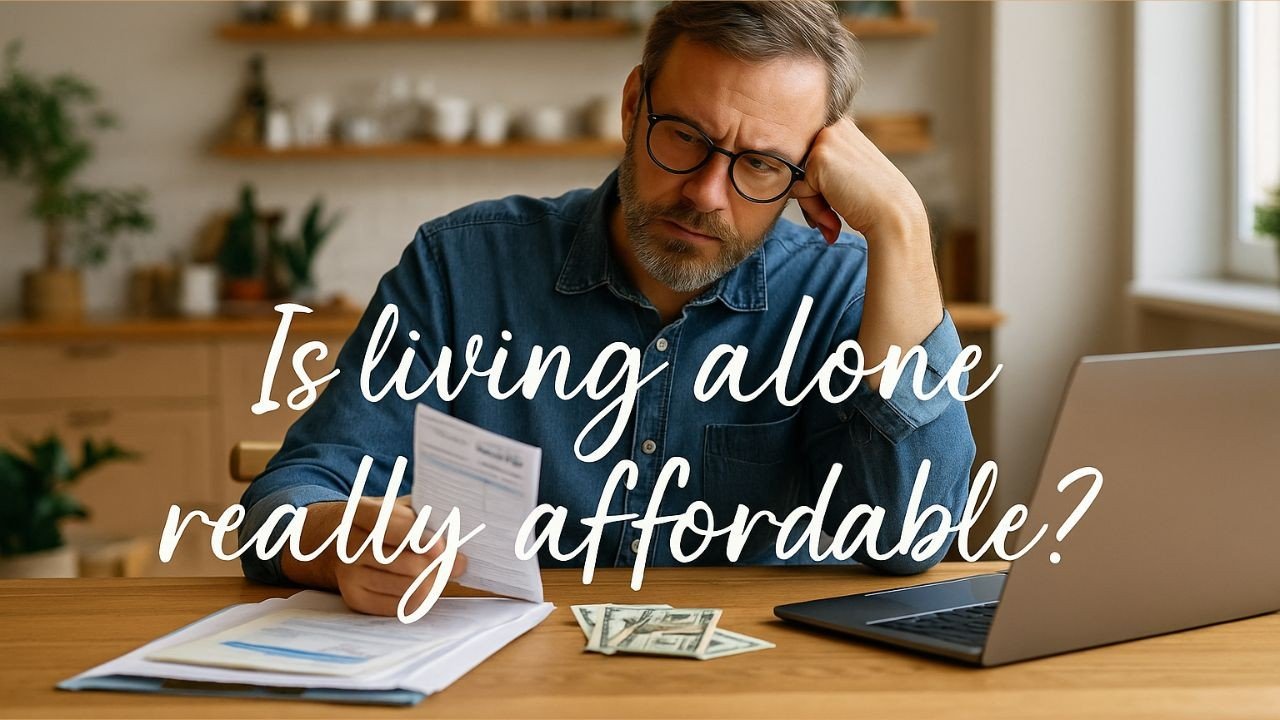When I first started thinking about living alone, I asked myself a simple but intimidating question: What’s the real cost of living alone? Rent was the obvious expense, but I knew there had to be more. The last thing I wanted was to sign a lease and find out two months later that I couldn’t actually afford the lifestyle I imagined.
If you’re wondering about the cost of living alone in 2025, you’re not alone. Let’s walk through the real numbers together so you’ll know what to expect — and whether solo living is within reach for you.
Why the Cost of Living Alone Catches People Off Guard
I thought I had it figured out when I moved into my first solo apartment. Rent seemed manageable, and I was proud of myself for landing a place that felt like mine. But after a few weeks, the bills started to roll in: electricity, water, Wi-Fi, groceries, and all the little extras that never crossed my mind when I was just calculating rent.
That’s when I realized the cost of living alone isn’t a single number. It’s a collection of everyday expenses that add up faster than you expect.
Breaking Down the Real Costs
Here’s how the cost of living alone usually plays out in 2025. Your numbers may be different, but these ranges will give you a realistic starting point.
Housing
Rent is the biggest factor. Depending on where you live:
- Small towns: $600–$900
- Mid-size cities: $900–$1,200
- Major cities: $1,500+
Don’t forget the security deposit and move-in fees, which can equal 1–2 months’ rent upfront.
Utilities & Internet
- Electricity, water, gas: $100–$200
- Internet: $60–$100
These aren’t optional, and they can vary by season — higher heating bills in winter or air conditioning costs in summer.
Groceries & Food
Living alone means no one is splitting the grocery bill with you. Expect:
- Groceries: $200–$400
- Eating out: $100–$250
Cooking at home helps a lot, and I share more tricks in my guide on how to save money living alone.
Transportation
- Public transit: $50–$150
- Car (loan, insurance, gas, maintenance): $300–$600+
If you’re in a city with reliable public transit, skipping a car can save thousands a year.
Lifestyle & Miscellaneous
The cost of living alone isn’t just bills. It’s also:
- Phone plan: $40–$100
- Health insurance: $150–$300
- Subscriptions, hobbies, and entertainment: $100–$200
These are easy to underestimate but important for maintaining a comfortable lifestyle.
Bare-Bones vs. Comfortable Living
When I asked myself what kind of solo living I wanted, the answer shaped my budget.
- Bare-Bones Living → The basics are covered, but there’s little room for extras. Rent eats a big chunk of your paycheck, and groceries are planned down to the dollar.
- Comfortable Living → You’re still watching expenses, but there’s space for dinners out, a hobby, or a weekend trip now and then.
Neither is wrong — it just depends on where you’re at financially and what matters most to you.
City vs. Small Town: Why Location Matters
I quickly learned that the cost of living alone depends heavily on where you plant your roots.
In a big city, I was shocked at how fast rent consumed my income. Even making a decent salary, I felt squeezed. Later, in a smaller town, I realized how much further my money stretched — I could save, enjoy hobbies, and still cover all my bills without stress.
If you’re asking yourself about the cost of living alone, make sure to factor in location. It’s often the single biggest difference between barely scraping by and living comfortably.
How to Know If You Can Afford It
Here’s the rule of thumb I use: your income should be at least three times your rent. If rent is $1,000, aim for $3,000/month in income. This simple ratio has saved me from jumping into apartments I couldn’t actually sustain.
And when in doubt, I circle back to my favorite question: Can I afford to live on my own right now, or do I need to wait a little longer? I dive deeper into that in my post on Can I Afford to Live on My Own?.
Final Thoughts
The cost of living alone in 2025 isn’t just a number — it’s a lifestyle. From rent and groceries to unexpected bills, solo living is about balancing independence with financial responsibility.
If you’re wondering where you stand, start by tracking your expenses and comparing them against your income. That simple step will tell you whether it’s time to move forward or hold off.
To make it easier, download the free Budget Basics Kit. It’s the tool I wish I had when I was first calculating the cost of living alone, and it can help you decide if solo life is within reach.
